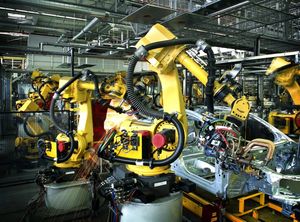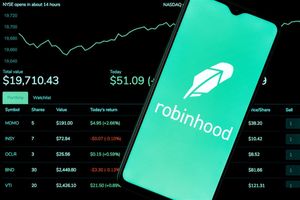
The global electric vehicle (EV) market is undergoing a significant recalibration, as an initial surge in demand gives way to a more measured, yet still growing, adoption curve. This shift is marked by a noticeable softening in consumer enthusiasm, particularly in key Western markets, even as overall EV sales continue to climb. For Tesla (NASDAQ: TSLA), the EV pioneer, these evolving market dynamics present immediate and profound challenges, impacting everything from its sales figures and production strategies to its stock performance. The confluence of decelerating growth rates, consumer hesitation driven by cost and infrastructure concerns, and aggressive competition, all set against a backdrop of broader macroeconomic headwinds, is forcing a critical re-evaluation across the entire EV landscape.
This period of transition highlights the maturation of the EV industry, where the initial hype is giving way to pragmatic consumer considerations. As the market normalizes, companies like Tesla must navigate a complex environment of price pressures and burgeoning alternatives, signaling a pivotal moment for the future trajectory of electric mobility and the competitive strategies required to thrive within it.
Tesla Confronts Margin Compression Amidst a Crowded EV Arena
Tesla, once synonymous with electric vehicles and lauded for its disruptive innovation, is now grappling with a formidable array of challenges that are fundamentally reshaping its operational strategy and market position. At the core of these struggles are persistent margin pressures and an escalating competitive landscape, compelling the company to pivot in an increasingly complex global market.
Tesla's profitability has faced significant headwinds. The company has resorted to repeated price cuts across its vehicle lineup globally to stimulate demand and fend off rivals. While these actions have sometimes bolstered sales volumes, they have come at a considerable cost to the company's net income. For example, Tesla's automotive revenue per vehicle saw a downward trend in Q3 2024. Furthermore, the once-lucrative sale of regulatory credits has been in decline, with Q2 2025 carbon credit revenue plummeting by over 50% year-over-year. Compounded by rising raw material costs and substantial investments in Artificial Intelligence (AI) and research and development (R&D), these factors have led to a notable contraction of Tesla's gross and operating margins. In Q1 2025, operating margin shrank to 2.1%, and net income fell a dramatic 71% year-over-year.
The competitive landscape for electric vehicles has become fiercely contested. Tesla is no longer the sole formidable player. Traditional automakers such as Ford (NYSE: F), General Motors (NYSE: GM), Volkswagen (FWB: VOW3), Hyundai (OTC: HYMTF), and Mercedes-Benz (FWB: MBG) have significantly ramped up their EV offerings, leveraging their deep manufacturing expertise and extensive dealer networks. More critically, new EV players, particularly from China, have emerged as formidable challengers. BYD (OTC: BYDDY), for instance, has aggressively expanded its market share, often outselling Tesla in key regions like China and, for the first time in April 2025, in Europe. Companies like Nio (NYSE: NIO), Xpeng (NYSE: XPEV), and even new entrants like Xiaomi (HKG: 1810) are offering competitively priced, feature-rich EVs, intensifying the price wars and further eroding Tesla's market dominance.
This dynamic environment is profoundly influencing Tesla's strategic decisions. The company has adopted aggressive pricing strategies, including price cuts and financing incentives, to maintain market share. Simultaneously, Tesla is strategically diversifying its focus beyond core automotive manufacturing into AI, robotics, and energy solutions, advancing its autonomous driving technology with plans for a robotaxi service and boosting its energy business (Powerwall and Megapack), which has shown strong growth and improved profitability. The company also plans to introduce more affordable models in early 2025, built on a next-gen platform, to address demand at lower price points.
Timeline of Recent Events:
- Q3 2024: Tesla reports improved automotive gross margin, with production costs reaching a record low. The stock experiences a significant surge.
- April 22, 2025: Tesla releases Q1 2025 results, showing a 9% year-over-year decrease in revenue and a 71% drop in net income.
- April 2025: BYD (OTC: BYDDY) outsells Tesla in Europe for the first time in battery electric vehicle (BEV) deliveries.
- July 23, 2025: Tesla reports Q2 2025 earnings, with revenue falling 12% year-over-year – the sharpest decline in at least a decade. Net income falls 16%.
- August 2025: Tesla's U.S. market share falls below 40%.
- September 15-17, 2025: Elon Musk purchases approximately $1 billion worth of Tesla (NASDAQ: TSLA) shares, providing a temporary boost to the stock.
- September 21, 2025: Tesla's Q3 2025 financial performance highlights production expansion and cost discipline, with margins stabilizing and energy solutions contributing 20% of total revenue.
The Shifting Tides: Who Gains and Who Stumbles in the EV Shakeout
The ongoing recalibration of the EV market, marked by softening demand and fierce competition, is creating a clear delineation between winners and losers across the automotive and related industries. As Tesla (NASDAQ: TSLA) navigates its challenges, other public companies are either seizing new opportunities or facing intensified existential threats.
Among the clearest winners are traditional automakers with strong hybrid portfolios. As consumers exhibit hesitation towards pure EVs due to high costs and charging anxieties, hybrids offer a compelling "technology bridge." Toyota (NYSE: TM), a pioneer in hybrid technology with models like the Prius, Corolla, and RAV4, is exceptionally well-positioned. Its strong hybrid sales continue to drive profitability, and its cautious stance on pure EV adoption has allowed it to maintain a robust financial position with net liquid assets exceeding ¥14 trillion. Other diversified players like Hyundai (OTC: HYMTF) and Kia (OTC: KIAMY) are also adapting by broadening their portfolios to capture demand across different propulsion technologies. Even General Motors (NYSE: GM) has seen its EV market share grow from 0.3% in early 2022 to 6.6% by 2024, demonstrating that legacy automakers can rapidly scale their EV offerings.
Select Chinese EV manufacturers are also emerging as significant winners. These companies, often supported by government initiatives and leveraging competitive pricing strategies, are aggressively gaining market share both domestically and internationally. BYD (OTC: BYDDY) stands out as Tesla's most formidable competitor, not only dominating the Chinese market but also expanding rapidly into Europe and Latin America. Its diverse lineup of affordable EVs and strong domestic presence have fueled its surge. Companies like Xpeng (NYSE: XPEV) are also demonstrating impressive growth with cost-effective yet feature-rich models challenging established players.
Beyond direct automotive manufacturing, diversified EV supply chain companies are finding opportunities. Companies like NVIDIA (NASDAQ: NVDA), a leader in AI chips, stand to gain as Tesla and others invest heavily in autonomous driving and robotics. Battery manufacturers with broad customer bases, such as CATL (SHE: 300750) and LG Energy Solution (KRX: 373220), also maintain strong positions, even amidst market overcapacity, by supplying batteries to a wide array of global automakers, including Tesla itself.
Conversely, the "losers" list is headed by Tesla (NASDAQ: TSLA) itself, which is experiencing declining market share and profitability pressures due to intense competition and the need for aggressive price cuts. Furthermore, new, pure-play EV startups with weak financial health are particularly vulnerable. High production costs, a tougher funding environment, and intense competition have led to significant struggles. Fisker (OTC: FSRN) serves as a stark example, filing for Chapter 11 bankruptcy in June 2024 after struggling with deliveries and cutting prices drastically. Lucid Group (NASDAQ: LCID), despite its luxury offerings, has reported substantial net losses, and Rivian Automotive (NASDAQ: RIVN) also faces increasing challenges in scaling production and achieving profitability.
Traditional automakers that are overly reliant on pure EVs without robust hybrid alternatives or those experiencing delayed EV rollouts are also feeling the squeeze. Porsche (ETR: P911), for instance, has warned of reduced 2025 profits due to weaker demand and pricing pressure in China, leading to delays in its EV rollout. Lastly, specialized EV supply chain companies too dependent on rapid EV growth are suffering. The market for Silicon Carbide (SiC) semiconductors, crucial for EV performance, is feeling the pinch from weakening demand and cheaper alternatives, leading some suppliers like Renesas to reportedly exit the SiC business. This highlights how an EV slowdown upstream can echo across all specialized component providers.
A Maturing Market: Industry-Wide Rethink and Policy Shifts
The softening demand for electric vehicles and the escalating competition, particularly impacting Tesla (NASDAQ: TSLA), are not isolated incidents but rather critical indicators of a maturing EV market. This profound shift is triggering a comprehensive industry-wide rethink, with far-reaching ripple effects on competitors, partners, and the regulatory landscape.
The initial phase of the EV revolution, characterized by rapid growth fueled by early adopters and generous government incentives, is now transitioning into a more complex, mainstream market. This maturation is evident in several key trends. While global EV sales continue to increase, the rate of growth has decelerated significantly, falling from 109% in 2021 to just 5% in 2024. Consumers are exhibiting increased resistance to EV adoption in markets like the U.S., with a majority still favoring gasoline-powered cars due to persistent concerns about charging access, affordability, and the practicalities of long-distance travel. This has led to a noticeable shift in consumer preference towards more affordable hybrid and plug-in hybrid electric vehicles (PHEVs and HEVs), which are increasingly viewed as a practical interim solution. The market is also experiencing a proliferation of EV models—785 models available globally in 2024, projected to reach 1,000 by 2026—contributing to market saturation and intensified price wars as manufacturers vie for consumer attention.
These shifts are sending ripple effects throughout the entire automotive ecosystem. Traditional automakers, such as Ford (NYSE: F), General Motors (NYSE: GM), Volkswagen (FWB: VOW3), and Mercedes-Benz (FWB: MBG), which had previously committed to aggressive electrification targets, are now revisiting their strategies. Many are scaling back their pure EV ambitions, re-investing in hybrid and even internal combustion engine (ICE) technologies, and adopting a more diversified approach. Volvo (OTC: VOLVY), for example, scrapped its 2030 fully electric goal. For pure-play EV startups, lacking the financial resilience and diversified revenue streams of legacy automakers, the environment has become particularly harsh. The slowdown in funding, coupled with profitability concerns, has led to a wave of bankruptcies, exemplified by companies like Lordstown Motors and Proterra Inc. Even battery suppliers like LG Energy Solution (KRX: 373220) and CATL (SHE: 300750) might face adjustments in demand forecasts and increased pricing pressure if automakers revise production volumes downwards. The charging infrastructure sector, while still crucial for long-term growth, could see delays in profitability if the build-out outpaces actual EV adoption rates in certain regions.
Regulatory and policy implications are also evolving in response to the market's new realities. Governments are moving towards a more balanced approach, potentially shifting from direct purchase incentives to infrastructure investments. The anticipated expiration of the federal EV tax credit in the U.S. on September 30, 2025, could further impact demand. Several U.S. states and even the UK government have either altered or softened their EV sales mandates, citing market readiness and infrastructure gaps. Furthermore, geopolitical factors and trade policies, such as increasing tariffs on automotive components and batteries from countries like China, are adding complexity and raising production costs across the industry.
Historically, these market dynamics bear striking resemblances to past technological shifts. The early 20th-century automotive industry, with its multitude of manufacturers followed by significant consolidation, offers a compelling parallel. The current EV slowdown can also be likened to the "trough of disillusionment" in technology adoption curves, where initial hype gives way to practical challenges and a necessary shakeout of less robust players. This period emphasizes that for long-term success, companies must balance innovation with cost-effectiveness, build strong brands, and focus on superior customer experience, much like established automakers have done for decades.
The Road Ahead: Adaptation, Diversification, and a More Pragmatic EV Future
The electric vehicle (EV) market, currently navigating a challenging phase of softening demand and intense competition, is poised for a future that demands strategic adaptation, diversification, and a more pragmatic approach from all players. The coming months and years will be pivotal in shaping the industry's trajectory, presenting both short-term hurdles and long-term opportunities.
In the short-term, the moderated growth rate in EV sales is likely to persist, particularly in Western markets. The global annual growth rate has already tapered to around 15% by August 2025, a significant slowdown from previous years. This scenario will likely see plug-in hybrid electric vehicles (PHEVs) continue to gain traction as a crucial "bridge technology" for consumers hesitant to commit to pure EVs due to concerns about affordability and charging infrastructure. Automakers will continue to adjust production targets and pricing strategies to align with these evolving demand patterns.
However, the long-term outlook for the EV market remains robust. The irreversible global push towards energy transition and carbon neutrality will underpin sustained demand. By 2025, one in four new cars sold globally is expected to be electric, potentially rising to one in two by 2032. Continued advancements in battery technology (e.g., solid-state batteries, enhanced lithium-ion chemistries), coupled with the expansion of charging infrastructure and the emergence of innovative business models like battery swapping, are anticipated to fuel this long-term expansion.
For Tesla (NASDAQ: TSLA), the strategic pivots are clear. The company will likely continue its aggressive price adjustments to maintain market share, while simultaneously accelerating the development and production of its next-generation, more affordable EV, rumored to be codenamed "Redwood" or "Model 2," targeting a $25,000 price point. This involves leveraging innovative manufacturing processes like the "Unboxed Process" to drastically reduce costs. Crucially, Tesla is increasingly diversifying beyond automotive manufacturing, with a strong focus on energy storage solutions (Powerwall and Megapack) and advancing its autonomous driving technology with ambitious plans for a robotaxi service and the Optimus humanoid robot. These non-automotive ventures are seen as key to future growth and higher-margin revenue streams.
Other automakers are also enacting significant adaptations. Many traditional players, including General Motors (NYSE: GM), Ford (NYSE: F), Volkswagen (FWB: VOW3), and Mercedes-Benz (FWB: MBG), are adjusting their electrification timelines, scaling back aggressive pure EV targets in favor of a more balanced approach that incorporates hybrids. The emphasis on cost reduction and affordability will be paramount, driving the development of more mass-market EVs under $30,000. Investments in battery technology and resilient supply chains will also intensify, alongside the exploration of new business models such as Battery-as-a-Service (BaaS) and software-defined vehicle features.
Emerging market opportunities, particularly in the Asia Pacific region (China, India, Southeast Asia), offer rapid growth potential for affordable EV models, supported by government initiatives. However, these markets also face challenges related to high upfront costs, limited charging infrastructure, and supply chain vulnerabilities.
Various scenarios could unfold for the industry. A "Slow Electrification" scenario (the most likely base case) would see continued, but slower, EV growth, with hybrids playing an extended role. A "Cutting-Edge Europe" or "Technology-Driven Boom" could emerge if significant battery breakthroughs accelerate adoption. Conversely, a scenario of "Chinese Dominance" could see Chinese manufacturers increasingly dominate global markets through cost advantages and localized production. The industry might also experience "Market Bifurcation," splitting between premium and affordable segments, or face ongoing challenges from "Infrastructure Bottlenecks" that hinder widespread adoption. The interplay of regulatory policies, geopolitical factors, and consumer behavior will critically influence which of these scenarios predominates.
A New Era for EVs: Resilience Through Diversification and Pragmatism
The electric vehicle industry is undeniably in a period of profound transition, signaling a decisive shift from its initial "gold rush" phase to a more mature, competitive, and ultimately, more sustainable market. The confluence of softening demand and intensifying competition, particularly evident in the challenges faced by Tesla (NASDAQ: TSLA), underscores a fundamental recalibration of expectations and strategies across the entire automotive sector.
The key takeaways from this evolving landscape are clear: The EV market is no longer solely driven by novelty and early adoption. It has matured to a point where consumer pragmatism regarding affordability, the reliability and accessibility of charging infrastructure, and a wider array of diverse product offerings—including a resurgence of hybrids—are paramount. Tesla, once the unrivaled leader, is now confronted with a formidable challenge to its market share from a growing roster of competitors, most notably from agile and cost-effective Chinese manufacturers. This competitive pressure is compelling Tesla to not only innovate within its core automotive business but also to aggressively diversify its long-term strategy towards becoming a broader technology and energy solutions provider, with its energy storage division already demonstrating robust growth.
Assessing the EV market moving forward, the long-term trajectory for electric mobility remains positive, driven by global commitments to decarbonization. While the explosive growth rates of the past may moderate to a more sustainable 15% to 22% annual increase, global EV sales are still projected to reach significant volumes, potentially accounting for one in two new vehicles by 2032. The market will become increasingly defined by diversified propulsion strategies, with hybrids acting as a critical bridge. Cost efficiency and continuous innovation, particularly in battery technology and manufacturing processes, will be non-negotiable for competitive advantage. Regional variations in adoption rates will persist, heavily influenced by local policies and infrastructure development, while the convergence of automotive with AI and robotics, championed by companies like Tesla, promises transformative changes.
The significance and lasting impact of these trends cannot be overstated. This period marks the EV industry's transition from a niche, premium segment to a mainstream market, where value, practicality, and customer experience will determine success. It represents a shakeout, rewarding adaptable companies that can offer a wide range of products catering to diverse consumer needs and price points, while simultaneously investing in critical supporting infrastructure.
For Tesla (NASDAQ: TSLA), this era is a litmus test for its ability to successfully integrate and commercialize its ambitious high-risk, high-reward ventures in AI, autonomous technology, and robotics, proving its resilience beyond pure vehicle manufacturing.
For investors in the coming months, a more nuanced and discerning approach to the EV sector is essential. The era of "growth at all costs" is giving way to a focus on profitability, diversified revenue streams, and sustainable business models. Investors should prioritize companies with strong balance sheets, a clear path to profitability, and a diversified product portfolio that includes hybrid options. For Tesla (NASDAQ: TSLA), key indicators to watch will be tangible progress in the production ramp-up of its rumored lower-cost vehicle (e.g., "Model Q" or "Model 2"), the expansion and safety record of its Robotaxi service, and the development timeline for its Optimus robot. These innovative initiatives, rather than just quarterly delivery numbers, will be crucial gauges of its future success. Furthermore, monitoring the development of robust charging infrastructure, shifts in government regulatory policies, and the evolving competitive landscape—especially from Chinese manufacturers—will be vital for making informed investment decisions in this dynamic and rapidly maturing industry. The road ahead for EVs is undoubtedly complex, but it is also one ripe with potential for those who can navigate its evolving contours with strategic foresight and adaptability.





